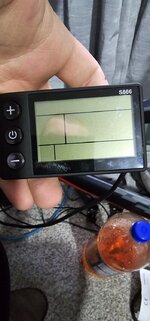Westfall
New Member
- Region
- United Kingdom
Hello all, I have a problem here that's just iching my brain for days now.
I have installed a new brainpower motor and throttle to my e mountain bike. Everything is working as it should with one problem. The battery is cutting out. No matter if I use full throttle or in bursts or even slightly pressed the battery will cut off and been running for around 5 seconds. I have messed around with the settings based of other forms but still no joy.
The bike is a year old and only been used 4-5 times.
Any help would be appreciated.
Thanks you.
I have installed a new brainpower motor and throttle to my e mountain bike. Everything is working as it should with one problem. The battery is cutting out. No matter if I use full throttle or in bursts or even slightly pressed the battery will cut off and been running for around 5 seconds. I have messed around with the settings based of other forms but still no joy.
The bike is a year old and only been used 4-5 times.
Any help would be appreciated.
Thanks you.



